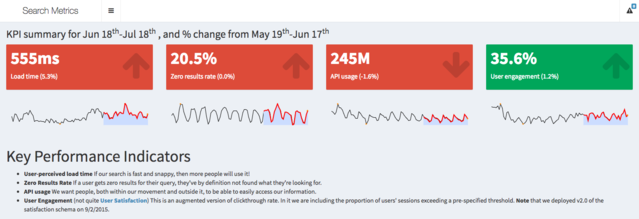OKR stands for “Objectives and Key Results”. To be a successful Product Manager, you need to fully understand the OKR Framework – a must know strategy.
To clarify, OKR is not a skill that can be learnt (unlike other critical product management skills), it is simply a style of functioning. You may already be using some version of the OKR framework, but you may not be aware of it. Within your scrum teams, clearly defining what kind of framework you use will help in bringing organisational clarity to your stakeholders.
Now is also a good time to make sure you are aware of the top 15 benefits of Kanban. Not to forget the top 15 benefits of Scrum.
OKR Framework Origin
But where did this framework come from? And why has it become so popular?
Answering the first question will automatically give you the answer for the second question.
Andy Grove, an employee at Intel, had first come up with the OKR acronym. Another employee at Intel, John Doerr, took the concept of OKRs with him when he went to work for the legendary venture capital firm Kleiner Perkins. In 1999, in a little known startup that Kleiner Perkins had invested in, Doerr initiated the concept of OKRs.
That little known startup was Google.

On a similar note, do you know what makes Elon Musk such an effective Product Manager?
The rest, as they say, is history.
OKRs have helped lead us to 10x growth, many times over.
Larry Page, Google Co-Founder
OKR is now an integral part of all processes within Google. And given their obvious success, the OKR framework in general has become wildly popular. If you are looking for successful OKR examples, look no further than OKR Google!
Learn how to grab opportunities like Warren Buffett!
As the Product Manager, it is your responsibility to set the objectives. You can use any tool that you already have – Jira is a good starting point.
OKR Meaning
At its core, the OKR Framework brings discipline within the team because you need to clearly define your objectives. Not only that, you need to make sure you are able to achieve your key results.
However, it is very important to not fall into the trap of the Waterfall model. OKR can and should be used only with the Agile Methodology. You should also understand the key differences in Agile vs Waterfall.
Many people make the mistake of getting fixated on pre-defined objectives, failing to take constant feedback and completely abandoning the Agile processes.
To help prevent this trap of falling into the Waterfall model, you need to keep all communication channels open. Don’t forget to communicate like a boss!
An objective is a clearly defined goal (with a clear timeline) that you as a Product Manager need to set. Nobody else should set the goal besides you (not the Scrum Master, Dev Lead, etc.).
Refresh your memory with the following key differences –
A Key Result is a measurable metric that can help in analysing the impact of the Objective. These metrics are also called KPIs (Key Performance Indicators).

OKR Product Management
No matter the product, OKR is seamlessly applicable to any management style.
In other words, this framework is Product Agnostic.
And as far as OKR software is concerned, there are many available on the market. But you can easily use any existing tool for your OKR metrics.
As a Product Manager, it is also important to create realistic goals and measurable key results. Keeping open ended goals with vague metrics is not only counter productive, it is actually demoralizing for the team.
I have always break down my bigger objectives into smaller and more manageable objectives. Then, I create many small KPIs to help understand my progress.
It is also important to have a fixed timeline for all your KPIs. A KPI becomes meaningless if there are no fixed timelines.
Also, it is a good practice to connect your OKRs to your larger product roadmap. It helps if you can demonstrate that a certain OKR is a natural bridge to a future feature or enhancement.
I also want to add in a point about product roadmaps here. Always try to be as detailed as possible in your product roadmap. However, don’t keep your features dependent on a fixed outcome of a previous OKR. Give yourself the buffer to proceed or update your roadmap based on your KPI results.
OKRs give all stakeholders a quantitative and a measurable sense of where the product stands.
OKR Examples
Let us look at a few examples.
🚀 Example 1: Scaling a B2B SaaS Platform for Enterprise Adoption
Objective: Become the go-to enterprise solution in the HR tech space by Q4 2025 💼🏢
This objective is ambitious, time-bound, and outcome-oriented. It’s not about building features—it’s about becoming the choice for enterprise clients.
🔑 Key Result 1: Increase enterprise customer base from 15 to 50 by end of Q4 📈
- Why it matters: Growth in enterprise clients is a direct signal of product-market fit at scale.
- How to measure: CRM data, signed contracts, and ARR contribution.
- PM focus: Collaborate with Sales to identify friction in the onboarding funnel and prioritize roadmap items that reduce time-to-value.
🔑 Key Result 2: Achieve 95%+ SLA compliance for enterprise-tier customers ⚙️🕒
- Why it matters: Enterprise clients demand reliability. SLA breaches erode trust.
- How to measure: Monitoring tools (e.g., Datadog, PagerDuty), incident reports.
- PM focus: Partner with SRE and Engineering to identify systemic risks and prioritize reliability epics over net-new features.
- The key is to keep it simple – don’t forget the KISS principle.
🔑 Key Result 3: Launch 3 enterprise-specific features with >80% adoption within 60 days of release 🧩📊
- Why it matters: Feature usage is a proxy for value delivery.
- How to measure: Feature flags, usage analytics (e.g., Amplitude), customer feedback.
- PM focus: Use JTBD interviews to validate feature concepts, run closed betas, and iterate quickly.
🔑 Key Result 4: Net Promoter Score (NPS) of 60+ from enterprise accounts 🎯💬
- Why it matters: NPS is a leading indicator of retention and expansion.
- How to measure: Quarterly NPS surveys segmented by account tier.
- PM focus: Work with Customer Success to close the loop on feedback and identify product gaps.
Why this OKR works for senior PMs:
- It’s not just about shipping—it’s about outcomes that align with business strategy.
- Each KR is measurable, time-bound, and cross-functional.
- It forces prioritization: reliability over velocity, adoption over vanity metrics.
Pro tip 💡: Tie these OKRs to compensation or promotion criteria for PMs to drive accountability and focus.
🌟 Example 2: Driving Product-Led Growth (PLG) in a Freemium Mobile App
Objective: Accelerate self-serve revenue through product-led growth by Q3 2025 📲💸
This objective is laser-focused on monetization through user behavior, not sales-led tactics.
🔑 Key Result 1: Increase free-to-paid conversion rate from 3.2% to 6% 🧪💳
- Why it matters: Conversion is the lifeblood of PLG.
- How to measure: Funnel analytics, cohort tracking.
- PM focus: Run A/B tests on paywall timing, pricing tiers, and feature gating. Use Mixpanel or Heap to analyze drop-off points.
🔑 Key Result 2: Reduce time-to-value (TTV) for new users from 2.5 days to under 1 day ⏱️✨
- Why it matters: Faster TTV = higher activation and retention.
- How to measure: Onboarding analytics, user journey mapping.
- PM focus: Redesign onboarding flow using progressive disclosure and contextual nudges. Validate with usability testing.
🔑 Key Result 3: Launch in-app referral program with 10K+ successful referrals in Q3 📣👯♂️
- Why it matters: Virality is a PLG multiplier.
- How to measure: Referral codes redeemed, new users acquired via referrals.
- PM focus: Collaborate with Growth and Design to build a seamless referral UX. Incentivize both sender and receiver.
🔑 Key Result 4: Increase average revenue per user (ARPU) by 25% 📈💰
- Why it matters: Monetization efficiency is key to sustainable growth.
- How to measure: Revenue dashboards, segmented by user type.
- PM focus: Introduce microtransactions or premium bundles. Use pricing experiments to find elasticity sweet spots.
Why this OKR works for senior PMs:
- It’s deeply tied to user behavior and business outcomes.
- It encourages experimentation and rapid iteration.
- It balances acquisition, activation, and monetization.
Pro tip 💡: Use a North Star Metric (e.g., “Activated Users”) to align the team and track progress across OKRs.

Conclusion – Measure What Matters
The OKR meaning should be clear to you now. Some people also ask about OKR vs KPI. But that is not a valid comparison. KPI stands for Key Performance Indicator, and it exists within the OKR framework. In other words, KPIs are a part of OKR goals.
In conclusion, setting up stretch goals and reaching for them is the hallmark of the OKR framework. Use your intuition and judgement while setting up these objectives. You already know the Business Requirements. You already know the Development Team capacity. Your job is to find the perfect match between the two. This is where your knowledge and experience will come in handy.
Bonus – How do you remain an effective Product Manager during Coronavirus?
Other online resources include the most famous OKR book – Measure What Matters, some OKR best practices and some Google OKR examples.



